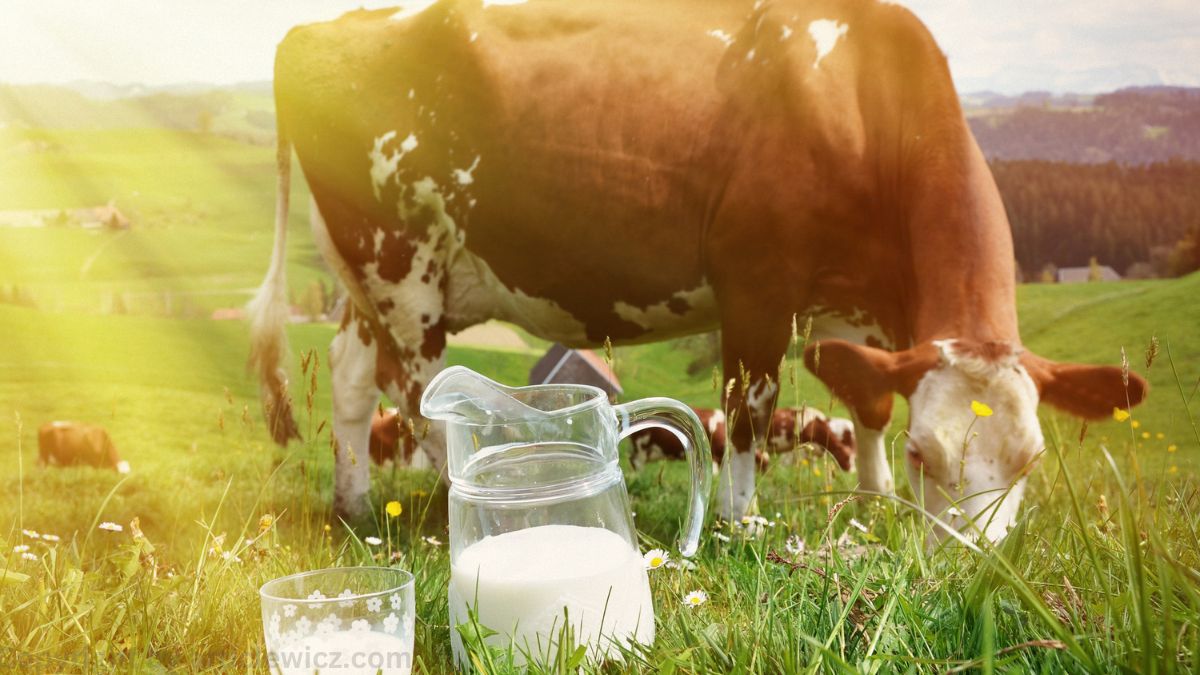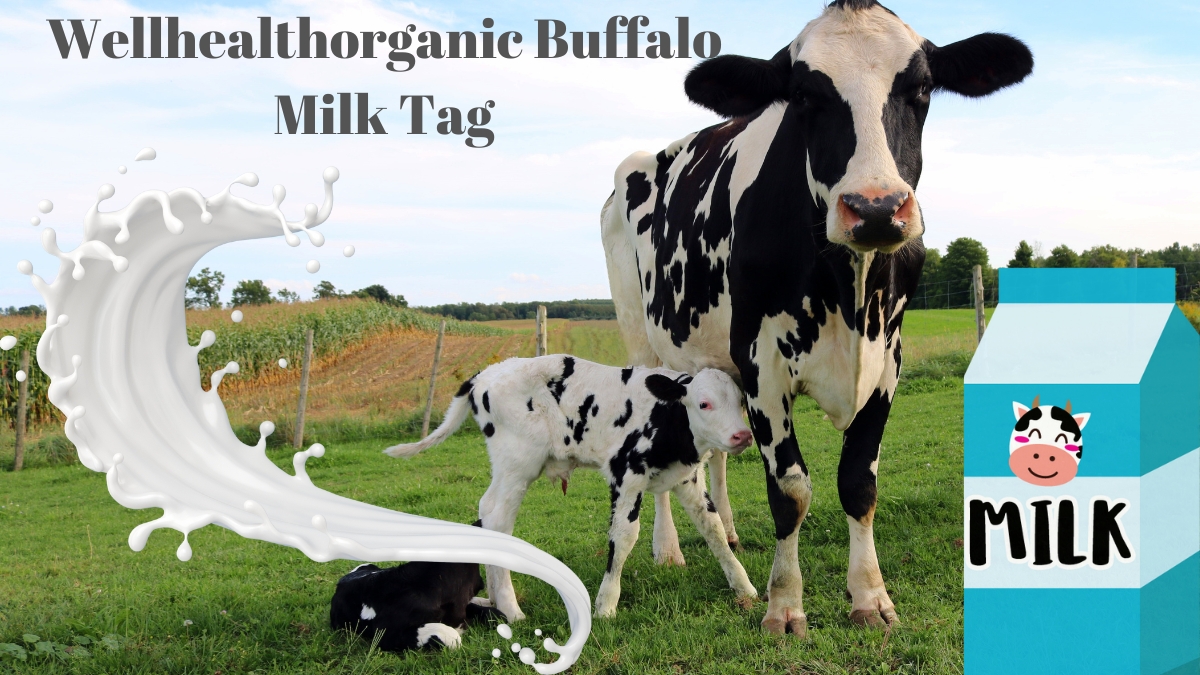Everything You Need to Know About WellHealthOrganic buffalo milk tag: Benefits, Uses, and More

Buffalo milk has been gaining attention for its rich nutritional value, creamy texture, and potential health benefits. But why is it considered superior to cow’s milk in some cultures? If you’re curious about buffalo milk, its benefits, and how to incorporate it into your diet, you’re in the right place!
- Introduction to Buffalo Milk
- Nutritional Profile of Buffalo Milk
- Health Benefits of Buffalo Milk
- Is Buffalo Milk Suitable for Lactose-Intolerant People?
- How to Use Buffalo Milk in Cooking
- Buffalo Milk for Skin and Hair Care
- Popular Buffalo Milk Products
- Environmental Impact of Buffalo Farming
- Potential Drawbacks of Buffalo Milk
- Conclusion
In this article, we’ll dive deep into everything you need to know about buffalo milk, its nutrients, benefits, uses, and much more. Let’s explore how this creamy delight can be a great addition to your life.
Introduction to Buffalo Milk
Buffalo milk is a dietary staple in many regions worldwide, particularly in countries like India, Pakistan, and Egypt, where its rich, creamy texture makes it ideal for producing dairy products such as cheese, butter, and yogurt. What sets buffalo milk apart from cow’s milk is its significantly higher fat content, which gives it a thicker consistency and a more indulgent flavor. This rich texture makes it the preferred choice for traditional dishes and dairy-based products, elevating them with enhanced creaminess and depth of flavor.
With the growing popularity of the WellHealthOrganic buffalo milk tag, more people are becoming aware of buffalo milk’s health benefits. Not only is it an excellent source of protein and calcium, but it also contains less cholesterol and more essential fatty acids than cow’s milk. These qualities make buffalo milk a nutrient-dense choice, particularly for individuals seeking an organic, wholesome alternative to conventional dairy. Its organic certification ensures that the milk is produced sustainably, free from harmful chemicals and synthetic hormones, offering both health-conscious consumers and eco-friendly advocates a better choice for their daily nutrition.
Nutritional Profile of Buffalo Milk
Buffalo milk is packed with nutrients that can offer a host of health benefits. Compared to cow’s milk, buffalo milk contains:
- Higher protein: Buffalo milk boasts a protein content that is almost 10% more than cow’s milk.
- More fat: It is richer in fats, making it ideal for those seeking a calorie-dense food source.
- Calcium: A vital nutrient for bone health, buffalo milk has more calcium than cow’s milk.
- Vitamins: High levels of vitamin A, vitamin B12, and vitamin D, which contribute to skin health, energy levels, and immune system functioning.
Doesn’t it sound like a powerhouse of nutrition? But that’s just the beginning of what buffalo milk can offer.
Health Benefits of Buffalo Milk
Why choose buffalo milk? Let’s break down its health benefits:
- Improved Bone Health: Due to its high calcium content, buffalo milk helps to strengthen bones and teeth.
- Boosts Immune System: The presence of antioxidants like vitamin A and vitamin C supports your immune system.
- Promotes Heart Health: The healthy fats in buffalo milk can help lower bad cholesterol levels, reducing the risk of heart diseases.
- Weight Gain and Muscle Building: Its high protein and fat content make buffalo milk a popular choice among those looking to gain weight or build muscle mass.
Buffalo milk isn’t just rich in flavor; it’s loaded with nutrients that make a significant impact on your overall well-being.
Buffalo Milk vs Cow Milk
Buffalo milk and cow’s milk are often compared, but they are quite different in terms of texture, flavor, and nutritional content. Here’s a quick comparison:
| Aspect | Buffalo | Cow Milk |
| Fat Content | Higher | Lower |
| Protein Content | Higher | Moderate |
| Lactose Content | Slightly Lower | Higher |
| Texture | Thicker and creamier | Lighter and less creamy |
| Use in Dairy Products | Ideal for cheese, butter, and yogurt | Common for milk-based drinks |
The richer fat content makes buffalo milk a popular choice for making ghee, paneer, and other dairy delicacies. Have you ever tried these? They’re delicious and nutritious!
Is Buffalo Milk Suitable for Lactose-Intolerant People?
One question that often comes up is whether buffalo milk is suitable for people who are lactose intolerant. Unfortunately, buffalo milk still contains lactose, though slightly less than cow’s milk. However, some people with mild lactose intolerance find they can tolerate buffalo milk better.
If you’re lactose intolerant but curious, it might be worth a try in small quantities.
How to Use Buffalo Milk in Cooking
Buffalo milk’s high fat content makes it ideal for certain types of cooking, especially for rich dishes. Here are some ways you can use buffalo milk:
- Cheese Making: Mozzarella and paneer are traditionally made from buffalo milk.
- Creamy Desserts: Think about adding buffalo milk to rice pudding or custards for an extra creamy texture.
- Butter: Homemade butter made from buffalo milk is thicker and more flavorful than regular butter.
Isn’t buffalo milk versatile? It can turn simple dishes into indulgent ones with its rich and creamy texture.
Buffalo Milk for Skin and Hair Care
Buffalo milk is not just for consuming—it can also be used in beauty routines! The natural fats and vitamins found in buffalo milk nourish the skin and hair. Here are some benefits:
- Moisturizer: The fat in buffalo milk helps hydrate dry skin and adds a natural glow.
- Exfoliator: Buffalo milk contains lactic acid, which can gently exfoliate dead skin cells.
- Hair Conditioner: Applying buffalo milk to hair can add moisture, making it smoother and shinier.
Who knew this nutritious drink could be part of your skincare regime?
Popular Buffalo Milk Products
Several dairy products are made exclusively from buffalo milk. Some of the most popular ones include:
- Mozzarella Cheese: Traditionally made from buffalo milk in Italy.
- Ghee: A type of clarified butter common in South Asian cooking.
- Paneer: A fresh cheese used in various Indian and Middle Eastern dishes.
- Yogurt: Creamy and rich, buffalo milk yogurt is thicker than cow’s milk yogurt.
Buffalo milk dairy products are not only delicious but also pack a nutritional punch.
Environmental Impact of Buffalo Farming
Buffalo farming has a different environmental footprint compared to cow farming. Here’s a look at how it impacts the environment:
- Water Usage: Buffaloes consume less water compared to cows, making buffalo farming slightly more water-efficient.
- Greenhouse Gases: Although buffaloes produce methane, studies suggest they contribute less to greenhouse gas emissions than cows.
Sustainability matters, and buffalo farming could be an eco-friendlier option compared to conventional dairy farming.
Potential Drawbacks of Buffalo Milk
While buffalo milk has numerous benefits, it may not be for everyone. Here are some potential drawbacks:
- High Fat Content: The high-fat content can be a concern for those on low-fat diets.
- Digestive Issues: People with lactose intolerance or sensitive digestive systems may experience bloating or discomfort after consuming buffalo milk.
- Availability: In some countries, buffalo milk may be harder to find compared to cow’s milk.
Considering these factors will help you determine if buffalo milk is the right choice for you.
Conclusion
WellHealthOrganic buffalo milk is more than just a dairy option; it’s a holistic approach to healthier living. From its exceptional nutrient profile to the organic farming practices that ensure its purity, this milk stands as a superior alternative in the realm of dairy products. Its higher fat content creates a rich, creamy texture, while the increased levels of protein and calcium make it particularly beneficial for those seeking to strengthen bones, muscles, and overall health.
The commitment to organic standards means that WellHealthOrganic buffalo milk is free from synthetic hormones, antibiotics, and harmful chemicals, providing peace of mind for health-conscious consumers. This dedication to quality extends to sustainable farming practices that prioritize environmental health, ensuring that each glass of milk not only nourishes you but also supports ecological balance
FAQs
- Is WellHealthOrganic buffalo milk suitable for people with lactose intolerance? It might be easier to digest for some people, but it’s still best to consult with a healthcare provider.
- How is WellHealthOrganic buffalo milk different from regular buffalo milk? It is certified organic, meaning it’s free from hormones and antibiotics.
- Can I use WellHealthOrganic buffalo milk for baking? Yes, its rich texture makes it ideal for baking and cooking.
- Where can I buy WellHealthOrganic buffalo milk? It’s available at local organic stores, online retailers, and some supermarkets.
- Is WellHealthOrganic buffalo milk more expensive than cow’s milk? Generally, it is more expensive due to the higher costs associated with organic farming.




